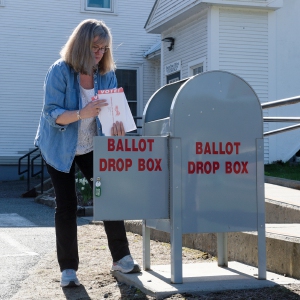Report: Without more housing and child care, employers won’t find workers
| Published: 09-09-2023 10:10 PM |
When adjusted for inflation, the average hourly wage in New Hampshire over the last 12 months is lower than it was in 2021. For every unemployed person, there are more than three unfilled jobs, due in part to limited affordable housing and child care. Workers 55 and older are increasingly saying they no longer want to work.
Those are some of the findings in the New Hampshire Fiscal Policy Institute’s latest analysis of the state’s economy, released last week. While the state has invested heavily in housing and child care, the institute said it won’t be enough.
Here are three takeaways.
New Hampshire’s record-low 1.7% unemployment rate, representing about 13,100 people, has been touted as an indication of the state’s strong economic recovery. The workforce story is less rosy, according to the institute’s analysis.
The number of Granite Staters who are employed or looking for work has declined since before the pandemic. Coos County has seen the biggest decline percentage-wise, followed by Cheshire County. Statewide, the largest percentage decline was among 20- to 24-year-olds, while the largest reduction in the number of workers was seen among 45- to 54-year-olds.
“The COVID-19 pandemic appears to have had a lasting effect on the labor force and likely accelerated trends that were ongoing, particularly relative to the state’s age demographics,” the institute said.
The analysis noted that retirements are on the rise among older Granite Staters and that more younger residents are staying home to care for children.
Between September 2022 and August, approximately 16,800 Granite Staters said they were not working because they were caring for a child who wasn’t in school or day care.
Article continues after...
Yesterday's Most Read Articles
 Dartmouth administration faces fierce criticism over protest arrests
Dartmouth administration faces fierce criticism over protest arrests
 Hanover house added to New Hampshire Register of Historic Places
Hanover house added to New Hampshire Register of Historic Places
 Sharon voters turn back proposal to renovate school
Sharon voters turn back proposal to renovate school
“High child care costs, or difficulty accessing affordable child care due to geographic distances, may be causing more families to choose to curtail or forgo paying for child care and instead reduce their working hours or remain outside of the labor force,” the institute said.
During the pandemic, the country saw a drop in the percentage of adults who said they would not be able to afford an unexpected $400 payment, such as a car repair, from 37% in 2019 to 32% in 2021. In October 2022, it was back at 37%, the institute reported.
The analysis noted that the decline coincided with the arrival of federal stimulus payments and increased savings built up during the pandemic. That money has largely been spent, and other supports, including emergency rental assistance and expanded tax credits, have ended.
“These data suggest households, particularly those with few assets, may not have any remaining additional post-pandemic financial capacity from accumulated savings,” it said.
Meanwhile, inflation is driving up costs, and housing and child care remain expensive and hard to find. The latter is a problem for employers if potential workers are staying home because they can’t afford child care or are moving to other states where they can find an affordable home.
The median monthly rent and utility costs for a two-bedroom apartment have risen 40% statewide since 2017 and 25% since the beginning of the pandemic, totaling $1,764 per month this spring, the institute found.
Home prices have climbed even faster, the analysis said.
The average median price for a single-family house averaged 75% higher in April to June 2023 compared to the same period in 2017. It’s up 45% from 2020, according to the analysis. In June 2023, that median single-family home price was $499,450.
Condominium prices have jumped too, by 55% between the second quarters of 2020 and 2023, and a total increase of 107% from the same periods in 2017 to 2023.
According to the institute, the average annual cost of home-based child care ranged from $10,140 to 10,400 in 2022, depending on a child’s age. Choosing a child care facility instead was more expensive, from an average of $14,235 to $15,340.
The state has invested more than $554 million in housing initiatives since 2020, much of it for emergency rental assistance. About $195 million was allotted to developers and municipalities to expand housing around the state.
It won’t be enough, the institute warned.
“Housing availability is key to continuing New Hampshire’s long-term strategy of importing workers from other states to support population and economic growth,” it said.
The state’s success also requires that child care become more available and affordable.
“Providing targeted supports and making investments to expand opportunities for households to access key needs, including child care and housing, has the potential to substantially help New Hampshire’s residents and economy thrive,” the report said.

 Plan on track to ship Upper Valley mail to Connecticut for sorting
Plan on track to ship Upper Valley mail to Connecticut for sorting West Lebanon crash
West Lebanon crash Over Easy: On bread, buttered popcorn and big sandwiches
Over Easy: On bread, buttered popcorn and big sandwiches
